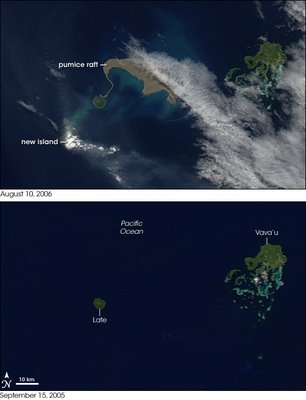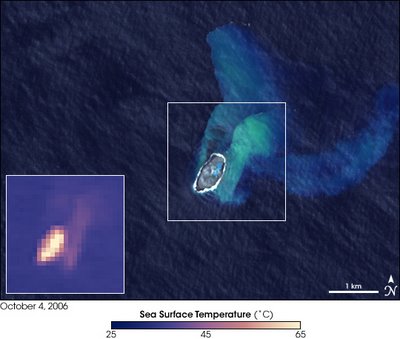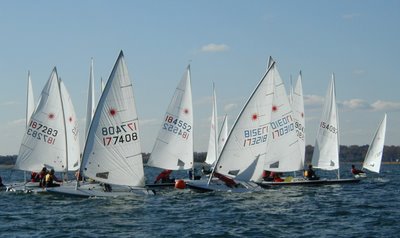Zephyr in Second Life & Sailing tells us that he has been "sitting on the transom of a sloop in a virtual marina sipping a cup of coffee and getting ready for a romping sail". In a reply to comments in a subsequent post we hear that he's "currently looking at Ms. Jacqueline Trueau's 'Defender II' sloop for purchase" and yesterday we learned that he has bought that sloop and that he (or his avatar) is sailing it on the waters of the Nantucket Sim.
Soulsailor in Crapper.. reports that he has "gotten properly addicted to Second Life", and has been racing in some virtual sailboat races. A couple of days later in One Sailing Boot... we learn that he is thinking of buying some land in Second Life and is asking us for advice on which of two properties he should buy: "Seriosuly guys what do you think... if you were hanging out in second life and were gonna come and visit me then where would you wanna go?"
Remember that these cups of coffee, boats, land, marina and houses that are being built, improved, coveted, admired, and bought and sold only exist as bits on servers at Linden Lab the creators of Second Life. I have to confess to being simultaneously intrigued and skeptical about this idea of immersing myself in an imaginary world of such richness and complexity. In response to a couple of comments from myself that must have communicated more skepticism than interest, Zephyr tells us...
At the moment the experience is somewhat limited due to computing power but in my opinion we are seeing the leading edge of a technology that will change the face of everything - the analogy I like to use is think of the gap between the old reel to reel tape player I remember my Dad having in the mid 1970's and the ipod today. We could have never envisioned something like the ipod when we thought the reel to reel was the bees knees but the core concept of portable audio was there and in 20 years or so it was extrapolated out to the ipod...which one could argue is in and of itself just the leading edge of something we can't yet envision. The point being that the excitement around "Second Life" has to do - for me - with what I can imagine being able to to as the technology gets more powerful. As well it's a cool way to interact more broadly with a community of (in my case) sailors.
He may well be right and I'm not sure why I don't immediately share his enthusiasm. It's not that I'm some kind of anti-technology luddite. After all I did spend almost 30 years of my life working in Information Technology, trying to keep up with each wave of change and working out how best to exploit it in our business. And in my personal life, while not being one of those early adopter types who has to own each latest gizmo as soon as it hits the market, I do end up using most popular consumer technologies sooner or later. I have even been known to play a sailing simulator game on my computer.
I think my reluctance to leap with both feet into Second Life is more related to the reason I don't play golf. In my former corporate life I was surrounded by colleagues who were avid golfers. They often encouraged me to join them in the sport. I always resisted the temptation because I suspected that golf would, like sailing, be one of those activities that I would find seriously addictive. My competitive streak would have driven me into wanting to improve my game and I would have spent every leisure hour practicing or playing in desperate efforts to lower my handicap. And that would have cut into the time available for my other addiction, sailing.
I have more time now I'm retired but I am also now addicted to blogging and marathon running as well as sailing. I'd like to be as good as I can be at all three. I'm scared that Second Life might be so engrossing it would cut into the time for my other addictions. Is it the kind of thing that, like heroin, it's so good you shouldn't even try it once?
Has anyone else tried sailing in Second Life? How does it compare to the real thing? What are the rewards of the experience? Will it make me a better Laser sailor? Are Zephyr and Soulsailor thought-leaders we should follow into the Second Life, or simply uber-geeks who need to get out and feel the sun on their backs and the wind on their faces more often?












